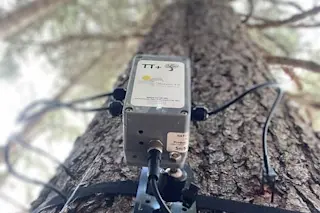Any Sriracha devotee knows the spicy condiment will add a little zing to just about anything that’s edible. But in addition to spicing up a meal, the famous rooster sauce also gives you a naturally produced high. Sriracha is made with a simple recipe of ground red chili peppers, vinegar, salt, sugar and some preservatives. The blend is so potent that Sriracha factories emit a problematically spicy pollution---the subject of a current lawsuit in California. The secret of the sauce's spiciness is the subject of a recent American Chemical Society video, unlocking the mystery of why Sriracha burns so good.
The peppers in Sriracha, not surprisingly, are the key ingredient, and two key chemical compounds in those red-hot chili peppers are what give you the kick in the mouth: capsaicin and dihydrocapsaicin. When ingested, these molecules trick our brains into thinking our mouths are literally burning. Specifically, capsaicin variants bind ...













